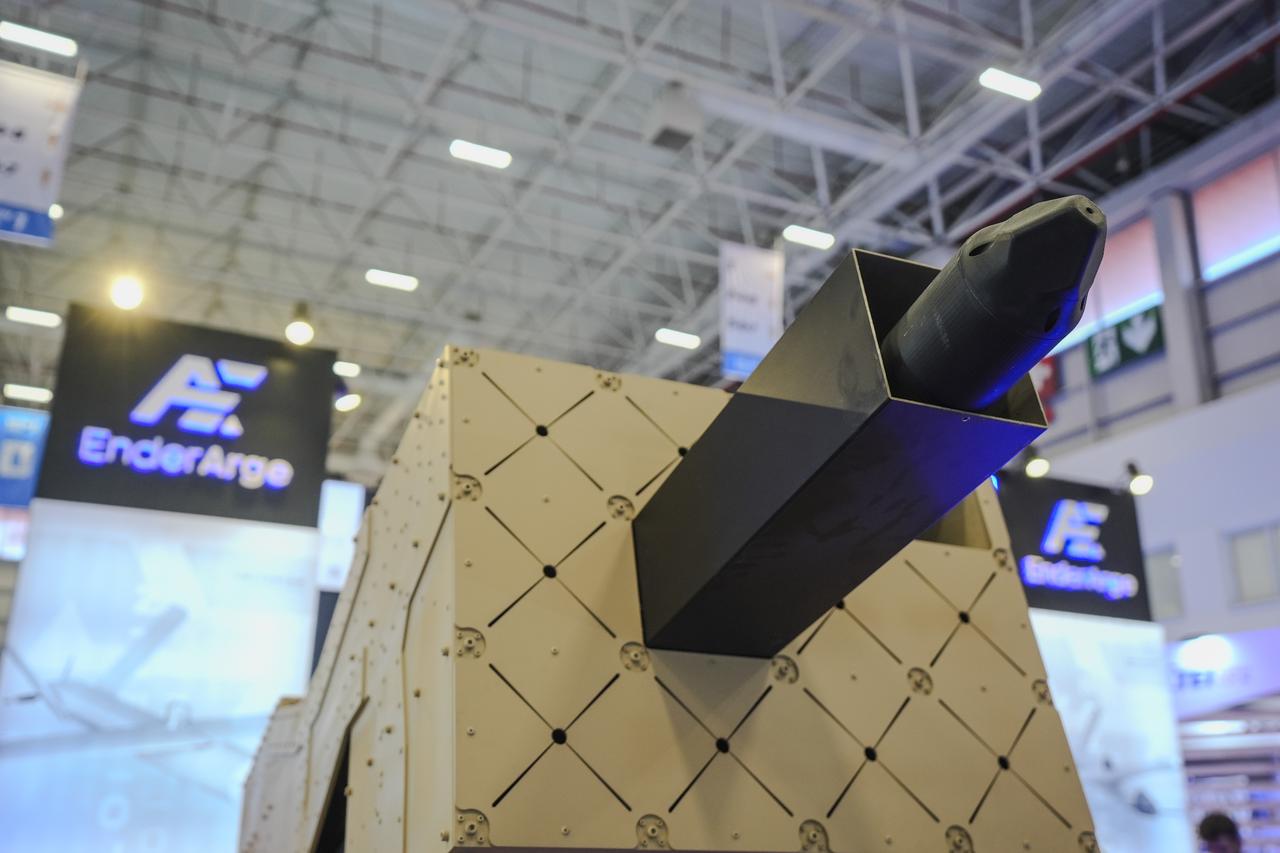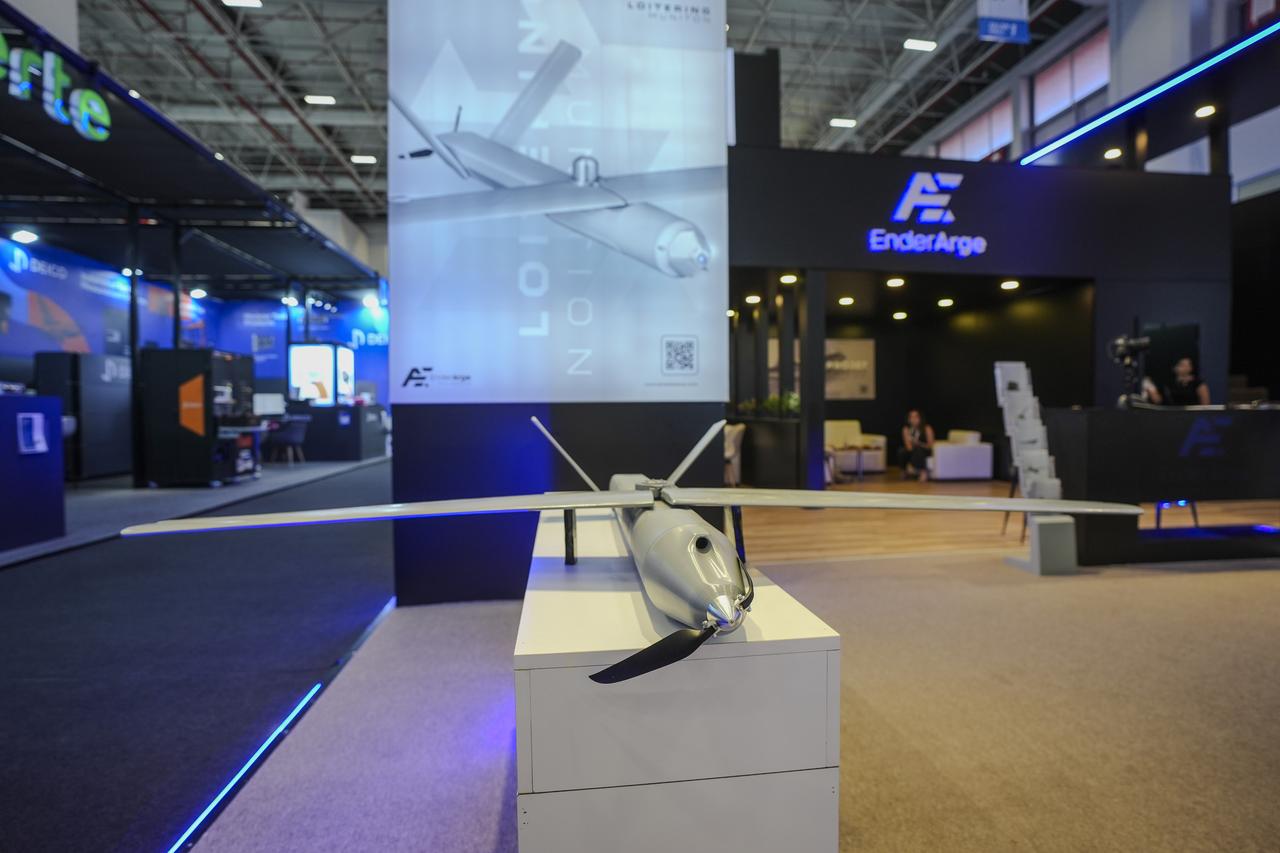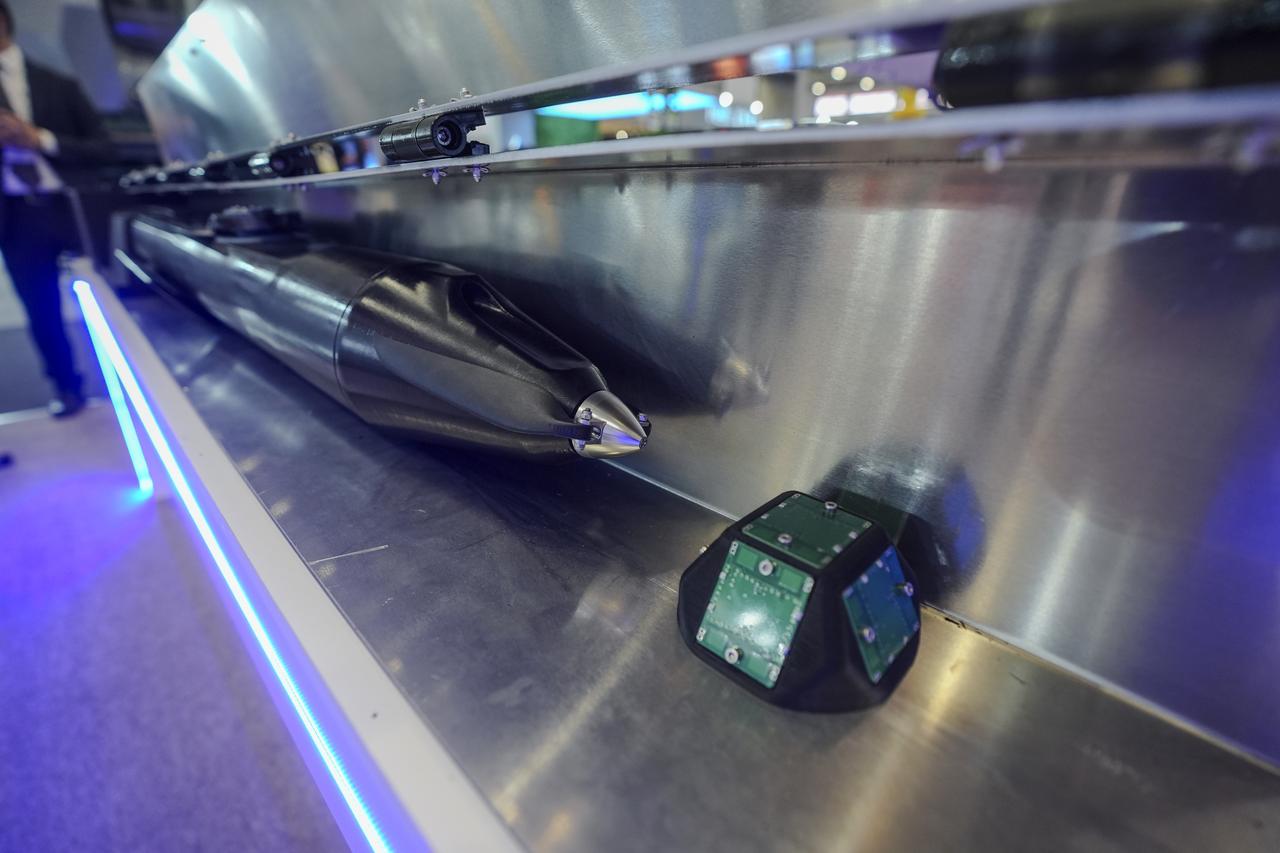
A Turkish defense company has developed what it claims is the world's first loitering munition system featuring fiber optic cable-connected FPV (First Person View) components with foldable wings that can establish data links with launchers, creating new battlefield advantages.
Ender ARGE, a Turkish defense contractor specializing in loitering munition technologies and anti-drone systems, showcased its latest innovations at the 17th International Defense Industry Fair (IDEF 2025).
The company has secured patents for its fiber optic cable-equipped foldable-wing loitering munition and completed testing phases, making the system mission-ready.

"We examined other loitering munitions worldwide, especially fiber optic cable loitering munitions, and developed a product that doesn't exist in inventories and hasn't been used yet," said Mustafa Mutlu Coban, General Manager of Ender ARGE.
"This attracted more international interest, especially from NATO allies," he added.
The system represents a significant technological advancement in the defense sector, with Coban noting increased foreign participation at this year's defense fair compared to previous years.
"The biggest advantage we provide is that we turned this into a foldable-wing drone. It became integrable with some platforms like USVs and establishes a data link with its launcher throughout the operation, and this data link allows us to reduce our detectability and achieve pinpoint success," Coban explained.
Traditional fiber optic rotary-wing drones present higher radar detection risks due to visible fiber optic drums underneath, munitions on top, and batteries in between, making them detectable at longer ranges compared to standard drones.

Ender ARGE has developed versions of the foldable-wing loitering munition with launcher capabilities at 10, 20, and 50-kilometer ranges. The system can be integrated with various platforms, including unmanned surface vehicles (USVs), providing significant force multiplication capabilities for both naval and ground operations.
"This has become a serious force multiplier both in USV integration and ground units. This has actually turned into a technology war," Coban explained. "In this context, we created a concept that is mainly used by a single personnel and enables military personnel to hit radar and electro-optics on opposing units directly by taking off from a USV instead of hitting the hull of ships."
The system features a 2.5-kilogram warhead with fiber optic launchers and loitering munitions capable of 10 and 20-kilometer ranges.
The electric motor-powered loitering munition offers distinct advantages in contested environments due to its minimal thermal signature and lack of radio frequency emissions, making detection by direction-finding antennas difficult.
"In situations where we want to conduct sabotage, it provides a serious advantage in close-range environments by quickly destroying jammers and similar units, and then allowing us to use other long-range munitions that use RF units," Coban said.

Testing for the fiber optic version was completed within the current year, with Ender ARGE targeting monthly production capacity of 1,000 units to meet both domestic requirements and NATO ally demands.
The company has already signed contracts for the RF-equipped, non-fiber optic version targeting African markets. Coban noted significant interest from Middle East, Gulf, and African countries, with European markets showing growing demand due to the system's technological superiority and economic viability.
Coban also noted the innovation's patent-protected status, stating: "In this form, it has the feature of being the first in the world, and we obtained the patent as Ender ARGE. This provides us with the following advantage: We have collected serious demand even in geographies like Ukraine, where fiber optic drones, FPV drones, and actually asymmetric elements are used the most."
The company secured patents specifically for enabling "fiber optic cable FPV units to become foldable-wing for the first time and establish connection with a launcher."
"At the level our defense industry has reached, we no longer monitor the world to see what condition they are in. On the contrary, we follow them to compete with them, which is a force multiplier that increases our ability to compete," Coban concluded.
The system operates without special seeker warheads or signal emissions, making it suitable for maritime environments and enabling ground forces to actively use it for sabotage operations against radar, jammer units, and communication systems.